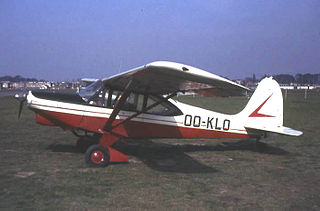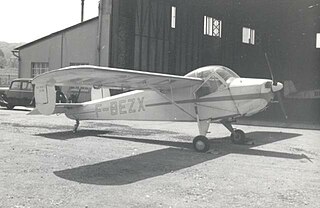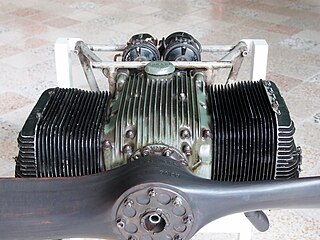
The Jodel D.11 is a French two-seat monoplane designed and developed by Société Avions Jodel in response to a French government request for a low-wing aircraft for use by the nation's many emerging flying clubs.

The Boisavia B.60 Mercurey was a series of four-seat light aircraft developed in France shortly after World War II.
The Boisavia B.260 Anjou was a four-seat twin-engine light aircraft developed in France in the 1950s. It was a low-wing cantilever monoplane of conventional configuration with retractable tricycle undercarriage. Intended by Boisavia as a touring aircraft, it did not find a market and only the single prototype was constructed. At this point, the firm sold the design to SIPA, which modified the design and re-engined it with Lycoming O-360 engines, but found that they could not sell it either. At a time when the twin-engine light plane market was already dominated by all-metal American aircraft, the Anjou's fabric-over-tube construction was something of an anachronism, and all development was soon ceased. Plans to develop a stretched version with three extra seats and Potez 4D engines were also abandoned.

The Brochet MB.70 was a two-seat light aircraft developed in France in the early 1950s for recreational flying and amateur construction.
The Brochet MB.100 was a three-seat light aircraft developed in France in the early 1950s.

The Call-Air Model A is an American two- to three-seat utility aircraft designed by the Call brothers and built by the Call Aircraft Company, later developed into a successful line of agricultural aircraft.

The Brochet MB.110 was a four-seat light aircraft developed in France in the early 1950s.
The Brochet MB.120 was a two-seat light aircraft developed in France in the 1950s.

The Mauboussin M.120 was a trainer and touring aircraft built in France in the 1930s and again in the years following World War II.

The Stinson Voyager was a 1940s American light utility monoplane built by the Stinson Aircraft Company.

The Macchi MB.308, later Aermacchi MB-308, was a light aircraft produced in Italy in the late 1940s, one of the most prolific Italian-built types of the following decade.

The Indraéro Aéro 101 was a light training biplane developed in France in the 1950s.

The Nord NC.850 was a light aircraft developed in France in the late 1940s for use by French aeroclubs, but which also saw military use as an airborne observation post.

The Wassmer WA-80 Piranha is a French two-seat low-wing cabin monoplane trainer designed and built by Société Wassmer. Based on the same construction as the company's WA-50 four-seater, the WA-80 was a scaled down version. The prototype, registered F-WVKR, first flew in November 1975 powered by a 100 hp Rolls-Royce Continental O-200 engine. Wassmer appointed a receiver and suspended production in 1977 after 25 had been built.

The SIPA S.90 was a French-built two-seat light touring and training aircraft of the 1940s and 1950s.

The Leopoldoff Colibri is a French-built light sporting and trainer biplane of the 1930s.

The Ambrosini Rondone is an Italian-designed two/three-seat light touring monoplane of the early 1950s.

The Max Plan PF.204 Busard was a French-built light sporting monoplane of the early 1950s. Following some modifications it was redesignated as PF.214; a planned derivative, the PF.215, was never made. The plane led to the subsequent construction of the Lefebvre Busard, a single-seat racing aircraft built marketed for homebuilding.

The Coupé-Aviation JC-01 is the first of a series of very similar designs of two seat, single engine sports aircraft, amateur built from plans in France from 1976. These provided a range of engine sizes and undercarriage layouts, but total production was small.

Production of the Minié 4.D series of air-cooled, flat four engines began before World War II and resumed afterwards into the 1950s.

















